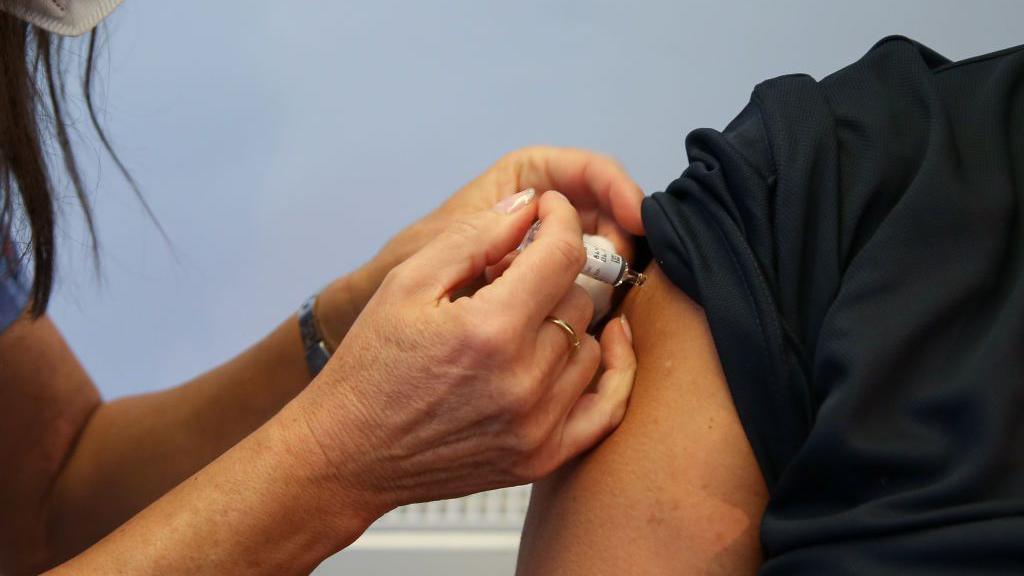Scotland's flu season starts early with rise in cases

Vaccinations are available free to people in vulnerable health groups
- Published
There has been a sharp increase in flu cases detected in Scotland over the last week, official figures show.
Data from Public Health Scotland (PHS) shows there were 431 new positive flu cases in the week ending 9 November, a 70% increase on the previous week when 253 cases were recorded.
The number of patients admitted to hospital has also almost doubled, rising from 115 to 218.
The figures comes as experts warn a new variant of flu is spreading more easily.
PHS said it was an earlier start to the flu season than in previous years.
Overall, 492 positive cases of flu were recorded last week (this number includes people testing positive more than once), resulting in a test positivity rate of 9.6%, up from 5.7% the previous week.
Last week's test positivity rate was also notably higher than in previous flu seasons.
During the same recording week in 2024/25 the test positivity rate was 2.9%, and in 2023/24 it was recorded at 1.5%.
The highest test positivity rate (23.5%) was found in children aged five to 14 years old.
Dr Kim Marsh from PHS said: "This year we are seeing a particularly early start to the flu season.
"Through characterisation of the virus, we can also see that we are seeing a H3N2 drifted strain which means it has the mutations to it and that might potentially cause more severe disease.
"We're really keen to monitor the situation closely."
How do I get the flu vaccine?
In Scotland, the flu vaccine is offered free on the NHS to people at increased risk of getting seriously ill from the virus.
This includes all children, those aged 65 and over as well as people aged 18 to 64 with eligible health conditions, such as diabetes or heart disease.
People not eligible for an NHS flu jab are being encouraged to get one privately from pharmacies, where they are available at a charge.
Vaccination rates remain low across some vulnerable groups.
Additional figures from PHS, external show social care workers had the lowest vaccine uptake with less than 10% covered as of 9 November, while just over 20% of adults aged 18 to 64 who could be at risk of flu were protected.
Less than half of babies and toddlers, pre-school, primary and secondary school children were also found to be vaccinated against the virus.

We have had severe flu seasons for the past two years and 2025 seems to be heading that way.
However, there are a number of unknowns about how things will pan out. Usually flu arrives in December and peaks over the new year, but it has started about four weeks early.
Laboratory results suggest the primary driver is a new variant, H3N2, which scientists have identified as more transmissible and potentially more serious than previous ones.
So far the highest number of cases are in school-age children who are more likely to spread the virus than become seriously ill.
Experts say hospital admissions are rising at the rate they would expect at this point but it will only really be in the next few weeks that we can tell if this new variant is leading to more people developing severe symptoms.
That's why they say the best way to protect against flu is to get vaccinated if you are eligible.
Related topics
- Published9 November
